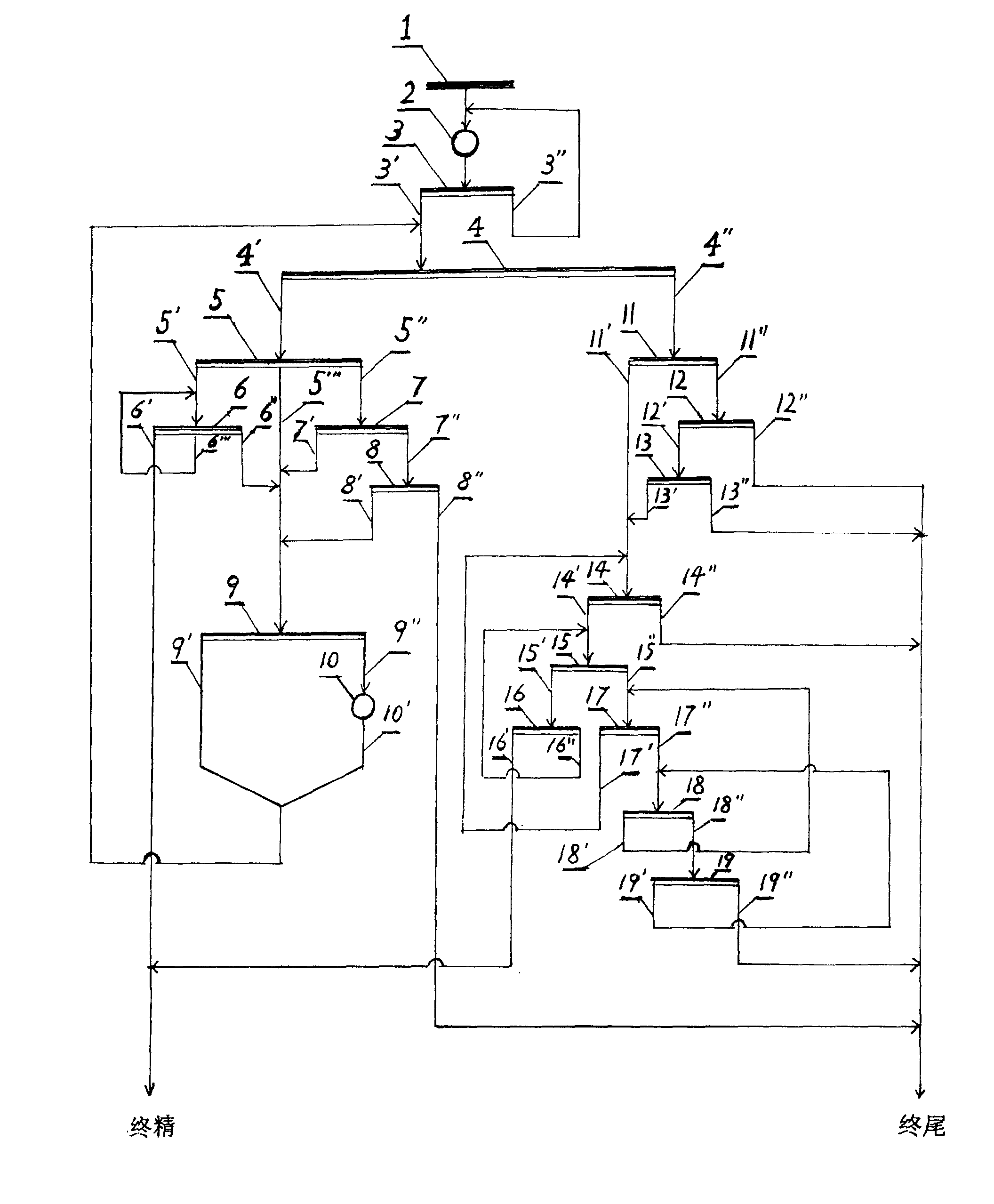Ore dressing process of treating poor hematite
A technology of iron ore and process, which is applied in the field of beneficiation process for processing lean hematite ore, and can solve the problems that the concentrate grade has not achieved breakthrough progress and affects the development of beneficiation technology
- Summary
- Abstract
- Description
- Claims
- Application Information
AI Technical Summary
Problems solved by technology
Method used
Image
Examples
Embodiment Construction
[0009] The present invention is mainly composed of stage grinding, coarse and fine separation, coarse gravity separation, middle ore regrinding and re-separation (referred to as coarse-grade mineral processing process) and fine-grained strong magnetic-reverse flotation (referred to as fine-grade mineral processing process).
[0010] The coarse-grained process produces two final products, heavy fines and sweeping magnetic tails, namely heavy tails, and produces an intermediate product, medium ore, for regrinding and re-election.
[0011] After the fine-grained process materials are subjected to weak magnetic and strong magnetic operations, they enter the reverse flotation operation, and after adding chemicals to adjust the pulp, they are separated by the first coarse, the first fine, and the third sweep to obtain the final concentrate product floating concentrate and the final tailings product Floating tail, and the intermediate product (medium ore) produced by it is returned to...
PUM
 Login to View More
Login to View More Abstract
Description
Claims
Application Information
 Login to View More
Login to View More - R&D
- Intellectual Property
- Life Sciences
- Materials
- Tech Scout
- Unparalleled Data Quality
- Higher Quality Content
- 60% Fewer Hallucinations
Browse by: Latest US Patents, China's latest patents, Technical Efficacy Thesaurus, Application Domain, Technology Topic, Popular Technical Reports.
© 2025 PatSnap. All rights reserved.Legal|Privacy policy|Modern Slavery Act Transparency Statement|Sitemap|About US| Contact US: help@patsnap.com


